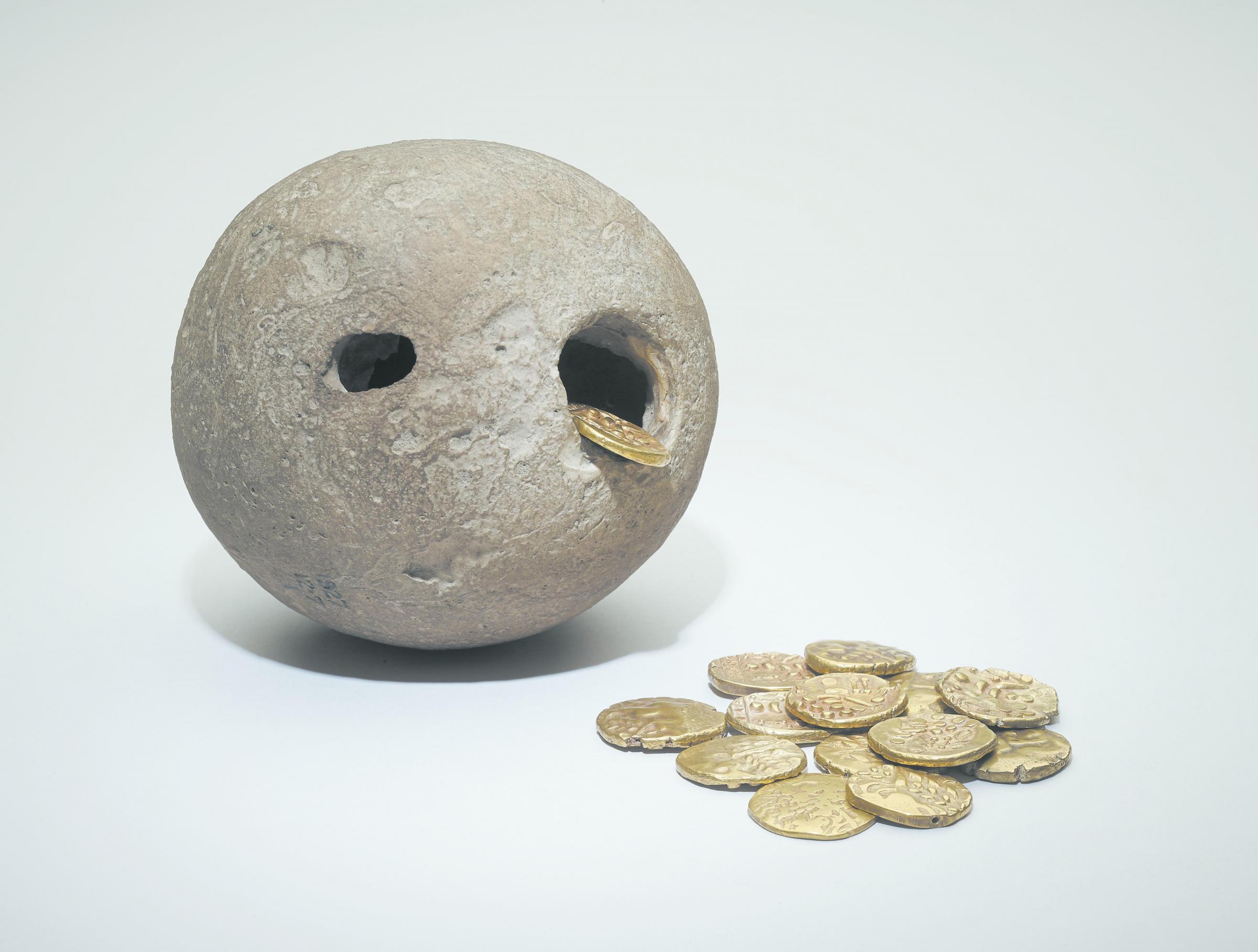Teda to je mazec 
Golden treasure in the flint cavity
Categories: Nálezy nejenom s detektorem ve Velké Británii a Irsku
The British Museum's latest PAS annual report states that for 2022, the most treasures have been reported since the Portable Antiquities Scheme was launched. A total of 53,000 archaeological finds were reported, with 1,378 of these meeting the definition of a treasure, including a very interesting hoard of gold Celtic staters in a flint 'box'.
The hoard was discovered using a metal detector the New Year's Eve before last at East Garston in West Berkshire. It consists of 26 gold staters dating back to the late Iron Age. They were stored inside the natural cavity of a flint ball. The staters are of the 'Savernake Wreaths' type with a horse at a gallop, spiral over the back and round the underfoot. They were minted between 50 BC and 20 BC in East Wiltshire.
Hollow flint is quite commonly found in the upper layers of the Chalk - the limestone geological strata of southern and eastern England, which was formed between 90 and 66 million years ago. Dissolved silica filled gaps in the dense Cretaceous mud and sometimes around sea creatures such as urchins and heartfishes. This formed flint pits, which left cavities inside the fill after the fill broke down.
The burial of coins in flint cavities is not that unusual, similar Iron Age discoveries have also been found in Kent, Oxfordshire and Wiltshire. Claw holes often have natural openings, making them a handy coin piggy bank, often without modification. Sometimes the cavity has been deliberately enlarged to accommodate more coins, but the East Garston flint has the original cavity. Only the top has had a hole broken off for the insertion of coins.
According to British Museum chief conservator Pippa Pearce, "Each coin is a miniature document.' The flint staters were declared treasure under the Treasure Act in 1996 - they contain two or more objects over 300 years old made of at least 10% precious metal (silver or gold) by weight. Once the value has been determined, the treasure will be offered for sale to museums and the money will be split between the finder and the landowner.
In 2019, the UK's Department for Digital Culture, Media and Sport announced a plan to revise the Treasure Act to address shortcomings. The updated version would define a treasure as any object that is at least partly metal, at least 200 years old, provides "out ofinsight" into British or regional history because of its rarity, location or association with a historical figure or event. The revision is due to come into force shortly and will apply to all objects found after 30 July 2023.
Roman Němec
Sources: theartnewspaper.com, thehistoryblog.com, antiquestradegazette.com

Westerham Stone Ball Coin Depot

flint vessel

hollow flint on the side

the cavity of the flint stone was used as a money box

a hoard of coins inside a flint box from east garston
The article is included in categories:
- Archive of articles > Archaeology > Finds and rescue research abroad > Nálezy nejenom s detektorem ve Velké Británii a Irsku
Post
Mají je strašně říznuté stříbrem, ty naše jsou o tolik žlutější :) Ale jinak je to nález, kde snadno skočíš na JIPce :)
Nepraktická peněženka ale ten obsah by se mnou asi šlehnul... 👍🙂
No do kapsy se to zrovna nehodí, ale když to hodíš na řemínek přes rameno, tak se to v případě nouze dá použít i jako zbraň. 
Parádní kasicka i obsah 

Vendo proč nepraktická? Ba naopak, nejen použití v nouzi ale třeba když někomu dlužíš peníze, "ná, chytej a omylem ho trefíš třeba ze zadu do hlavy" 


 tak to jó
tak to jó 













